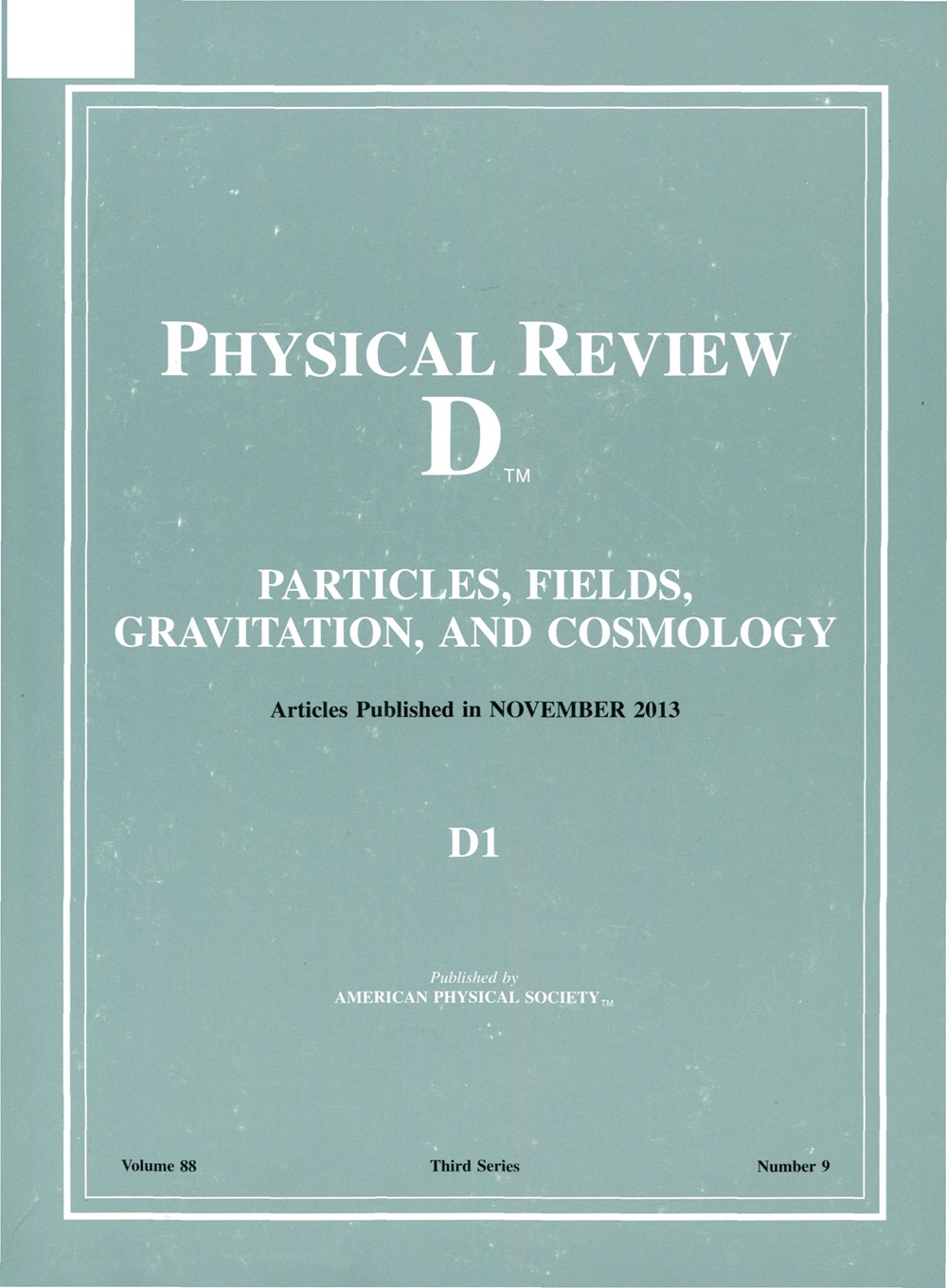银河系中吸积诱导的波塞诺瓦的可探测性
IF 5.3
2区 物理与天体物理
Q1 Physics and Astronomy
引用次数: 0
摘要
我们根据银河系暗物质晕的轴子小簇质量函数估计了银河系中轴子恒星的坍缩率。我们考虑了轴子质量在不同温度下演化的类轴子粒子(ALP),包括ma=50μeV的QCD轴子。结合我们之前对轴子星质量函数的估计和自相似增长预测的轴子星吸积模型,我们可以推断出银河系中出现的波塞诺瓦的预期数量。我们的估计表明,在1年的观测时间内,每个星系中高达~ 1013个波senovae的大多数发生在初始过密度参数Φ > 104的最密集的小星团中。我们讨论了在银河系附近这种反复出现的轴子爆发的可探测性,并发现,对于包括轴子-费米子相互作用在内的导数耦合模型,潜在的宽带轴子暗物质实验可以探测到大范围的ALP质量ma≤10−6 eV,甚至在量子色动力学轴子情况下也有适度的改进。对于具有非导数型相互作用(如轴子-光子耦合)的轴子,我们的分析表明,通过专门的爆发搜索可以探测到轴子恒星f -−1暗物质丰度为1阶的乐观预测。2025年由美国物理学会出版本文章由计算机程序翻译,如有差异,请以英文原文为准。
Detectability of accretion-induced bosenovae in the Milky Way
We estimate collapse rates of axion stars in our galaxy based on the axion minicluster mass function of the Milky Way dark matter halo. We consider axionlike particles (ALP) with different temperature evolution of the axion mass, including the QCD axion with ma=50μeV. Combining estimates for the present-day axion star mass function from our previous work with the axion star accretion model predicted by self-similar growth, we can infer the expected number of bosenovae occurring within the Milky Way. Our estimates suggest that for an observation time of t obs = 1 yr ∼ 10 13 Φ ≲ 10 4 m a ≲ 10 − 6 eV f ⋆ ∼ 1 Published by the American Physical Society 2025
求助全文
通过发布文献求助,成功后即可免费获取论文全文。
去求助
来源期刊

Physical Review D
物理-天文与天体物理
CiteScore
9.20
自引率
36.00%
发文量
0
审稿时长
2 months
期刊介绍:
Physical Review D (PRD) is a leading journal in elementary particle physics, field theory, gravitation, and cosmology and is one of the top-cited journals in high-energy physics.
PRD covers experimental and theoretical results in all aspects of particle physics, field theory, gravitation and cosmology, including:
Particle physics experiments,
Electroweak interactions,
Strong interactions,
Lattice field theories, lattice QCD,
Beyond the standard model physics,
Phenomenological aspects of field theory, general methods,
Gravity, cosmology, cosmic rays,
Astrophysics and astroparticle physics,
General relativity,
Formal aspects of field theory, field theory in curved space,
String theory, quantum gravity, gauge/gravity duality.
 求助内容:
求助内容: 应助结果提醒方式:
应助结果提醒方式:


